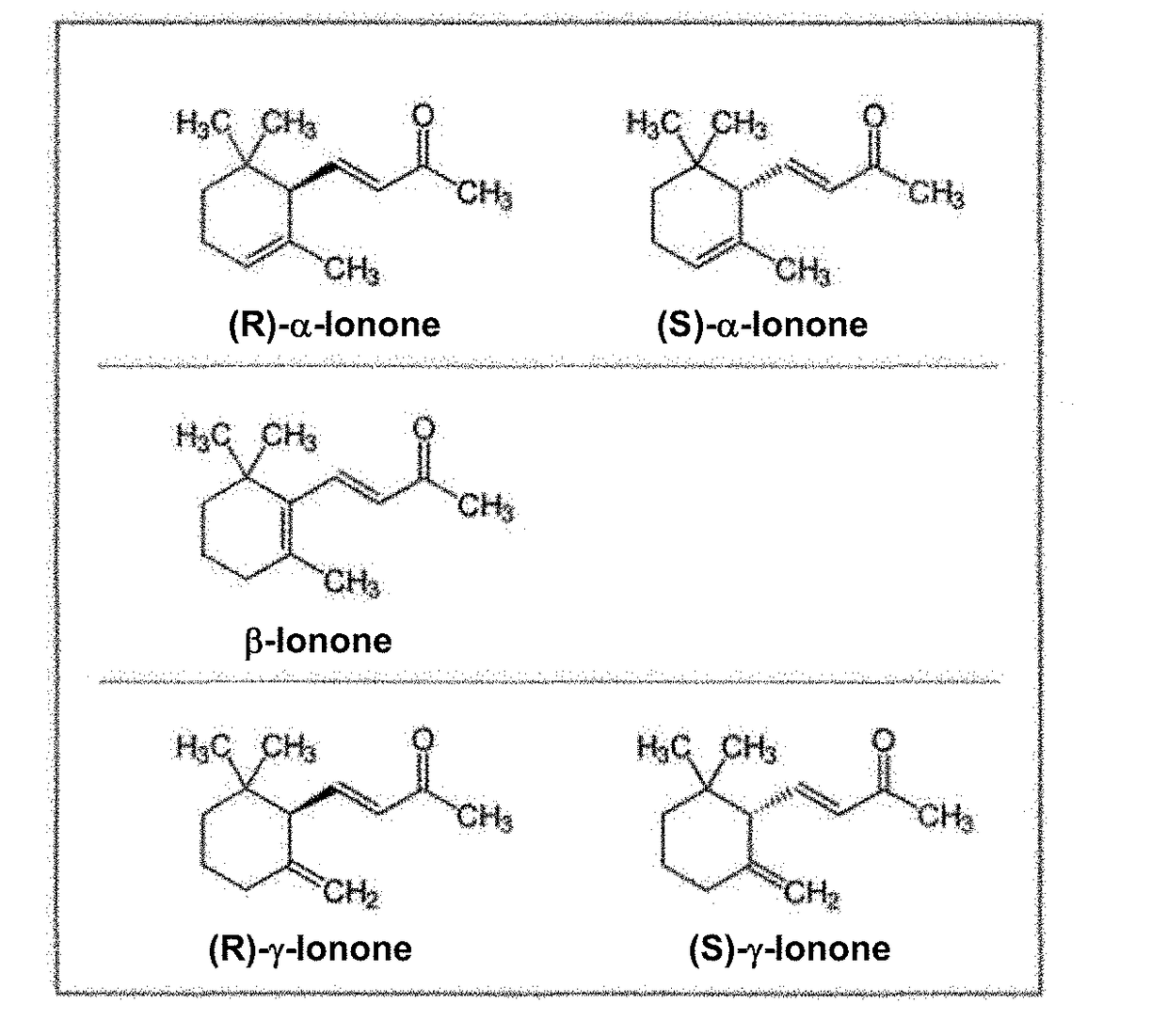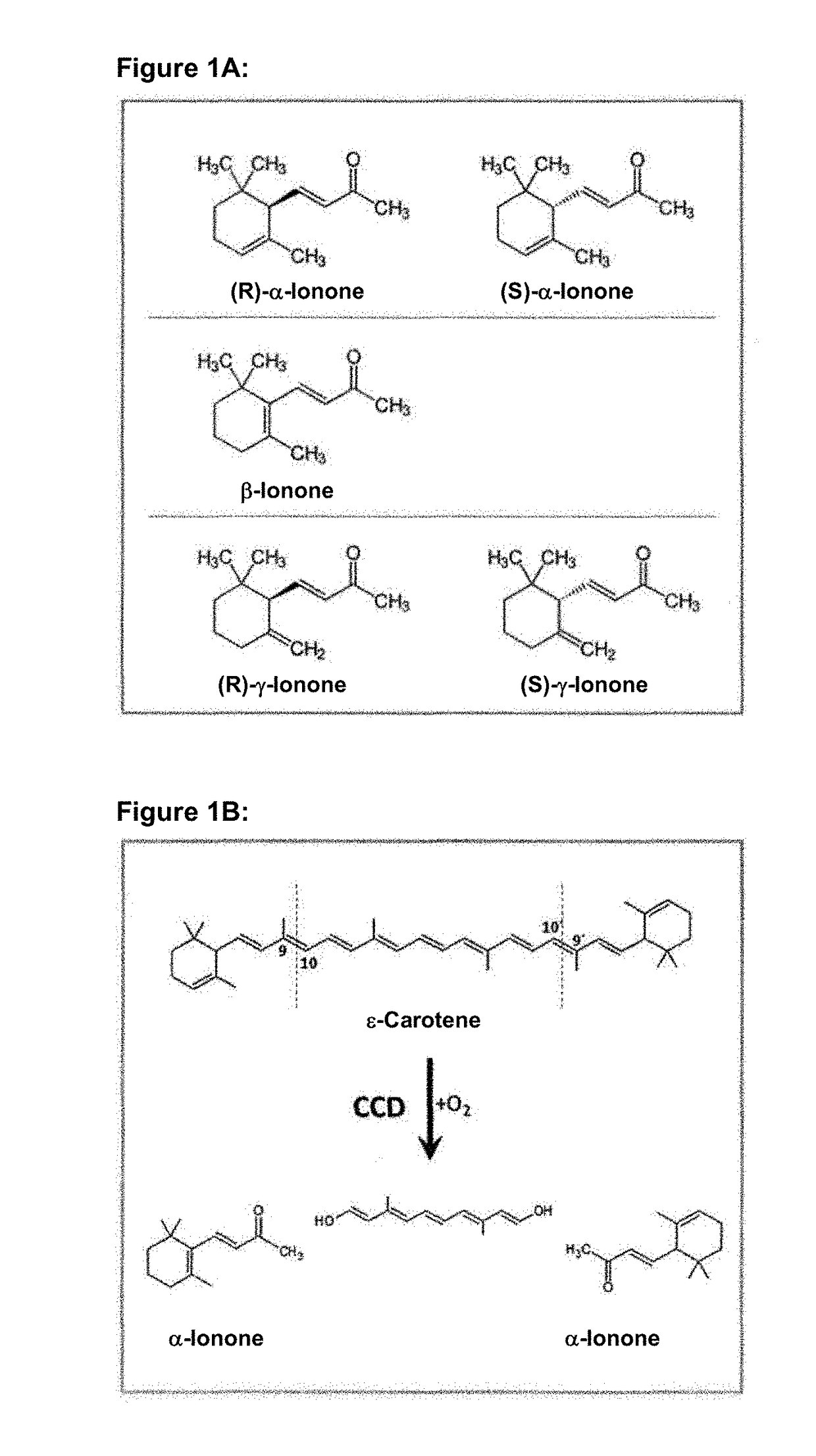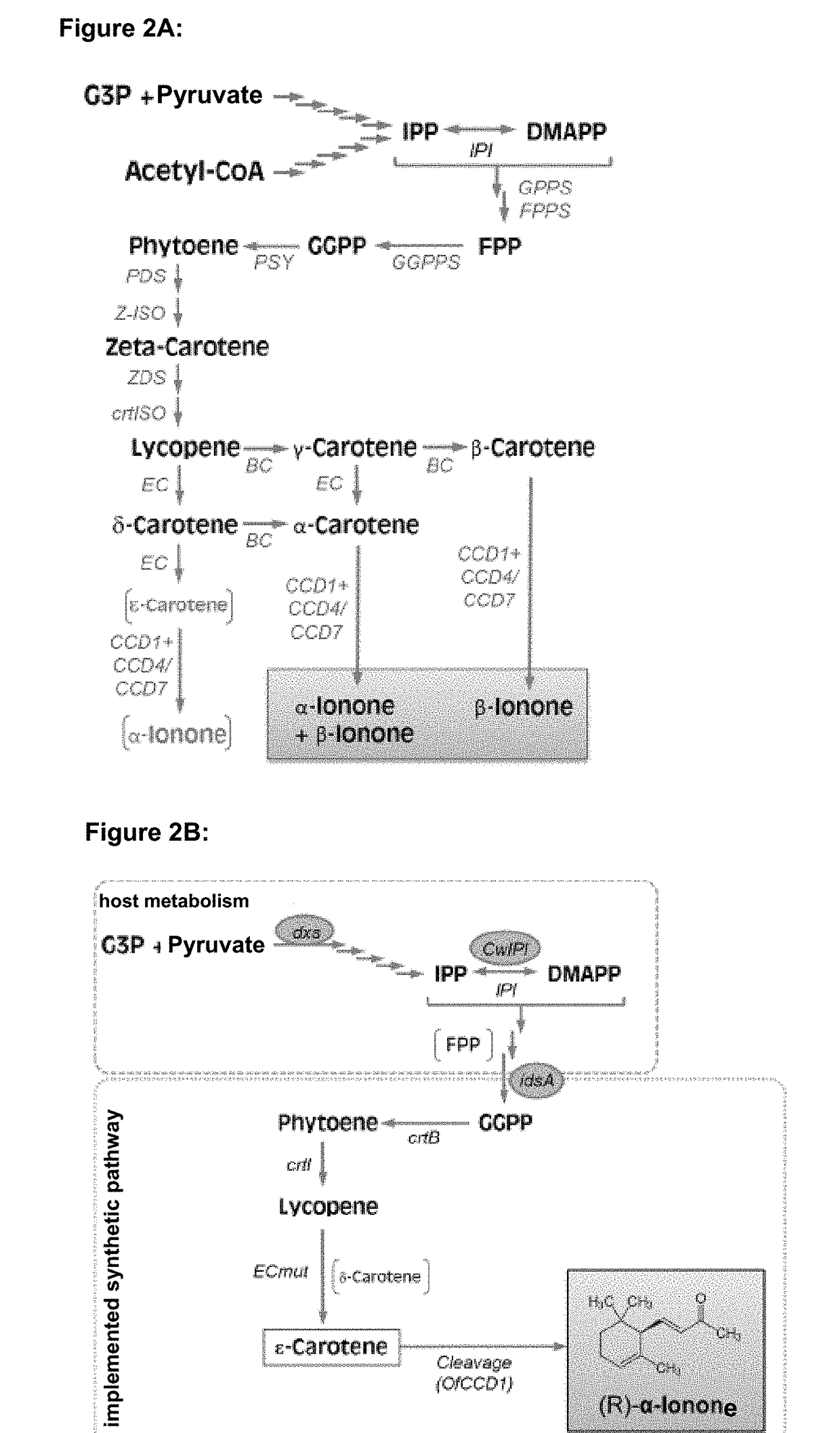Method of fermentative alpha-ionone production
a technology of alpha-ionone and fermentation, which is applied in the field of fermentation alpha-ionone production, can solve the problems of inconvenient use of delta-carotene as starting material for efficient alpha-ionone production, laborious and costly enrichment and purification steps, and inability to achieve the effect of preventing beta-cyclase activity and being environmentally friendly
- Summary
- Abstract
- Description
- Claims
- Application Information
AI Technical Summary
Benefits of technology
Problems solved by technology
Method used
Image
Examples
example 1
Optimization of an Expression Plasmid
[0212]Starting for optimizing the expression vector was the plasmid pAC-BETAipi (Cunningham et al., 2007), which carries carotenoid genes of E. herbicola (crtE, IPI, crtB and 20 crtI). Among other things, plasmid pAC-BETAipi was modified as follows, so as to produce the plasmid pGT1036 (SEQ ID No. 11) using Molecular Biology standard methods known to the skilled person (Sambrook J, Fritsch E F, Maniatis T. in: Molecular Cloning, A Laboratory Manual, 1989 (Nolan C, Ed.), Cold Spring Harbor Laboratory Press, Cold Spring Harbor, N.Y.): Deletion 984-1394, Deletion 3432-5356 and Deletion 7761-25 8399. A plasmid map of the resulting plasmids pGT1036 is depicted in FIG. 3A and FIG. 3B lists the complete acid nucleic sequence of pGT1036.
[0213]The analysis of the lycopene yield was conducted analogously to the analysis described in Example 6 for the epsilon-Carotene yield. Briefly: The HPLC analysis of the bacterial carotenoid extracts was conducted using...
example 2
Cloning of an Artificial Terminator Sequence aTerm5
[0217]Starting from the expression plasmid pGJ2720 (Jach et al. 2006) a short DNA sequence, consisting of a random sequence of 18 bp that is flanked by 10 bp inverted repeats was introduced at the 3′-end of the reporter gene RFP (Red Fluorescent Protein). The following primers were used for the PCR reaction (N=random nucleotide):
SEQ ID No. 1: NNNNNNNNAACGGGATTTTTTGCTGAAAGGAGGAACTATATCCSEQ ID No. 2: NNNNNNNNNNAACGGGCTTTGTTAGCAGCCGG
[0218]The PCR reaction (50 μl end volume) contained the following in bidest. water dissolved components: 5ng pGJ2720 plasmid (template), 20 μmol each of primers P2750 and P2751, 10 nmol each of nucleotides dATP, dCTP, dGTP, dTTP and 5 μl Q5-Puffer(10×). The following program was used: 2 minutes at 98° C., then 30 cycles each with 30 seconds at 98° C., 30 seconds at 65° C. and 90 seconds 72° C., followed by 5 minutes at 72° C.
[0219]After addition of 10 units of the restriction enzyme Dpnl, the PCR reaction w...
example 3
Cloning of the Lycopene-Epsilon-Cyclase (EC) of A. Thaliana
[0220]An in-silico analysis of the lycopene-epsilon-cyclase (EC) encoded by the Arabidopsis thaliana gene At5g57030 was conducted, which showed that the first 44 amino acids (excluding the N-terminal Methionine) of the protein sequence constitute a chloroplast localization signal (transit peptide). Using PCR, the determined coding region of the mature protein (AtEC-del, SEQ ID No. 19) from A. thaliana cDNA was amplified, since the genomic gene sequence contains multiple Introns and is therefore not suitable for the microbial expression of the enzyme. Subsequently, it was sub-cloned in the expression plasmid pGJ2720, and the resulting DNA sequence was verified.
PUM
| Property | Measurement | Unit |
|---|---|---|
| Fraction | aaaaa | aaaaa |
| Fraction | aaaaa | aaaaa |
| Fraction | aaaaa | aaaaa |
Abstract
Description
Claims
Application Information
 Login to View More
Login to View More - R&D
- Intellectual Property
- Life Sciences
- Materials
- Tech Scout
- Unparalleled Data Quality
- Higher Quality Content
- 60% Fewer Hallucinations
Browse by: Latest US Patents, China's latest patents, Technical Efficacy Thesaurus, Application Domain, Technology Topic, Popular Technical Reports.
© 2025 PatSnap. All rights reserved.Legal|Privacy policy|Modern Slavery Act Transparency Statement|Sitemap|About US| Contact US: help@patsnap.com



